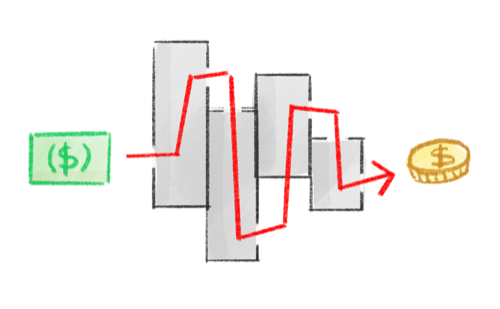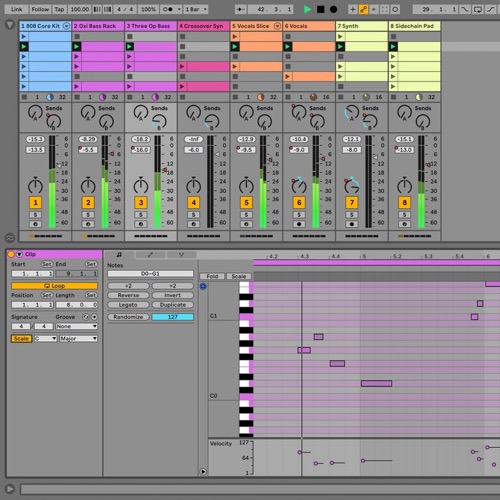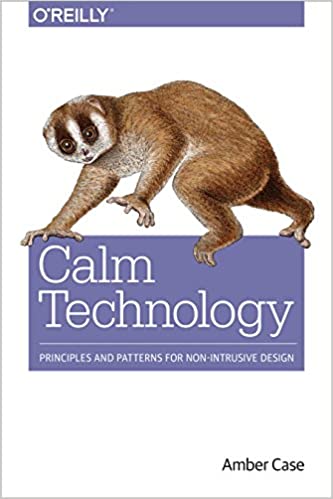Amber Case, 2021 Mozilla Fellow

Cool Tools Show 299: Amber Case
Our guest this week is Amber Case. Amber studies the interaction between humans and computers and how technology is changing everyday life. Amber was named one of Inc. Magazine’s 30 under 30, and Fast Company’s Most Influential Women in Technology. She was named the National Geographic Emerging Explorer. She won the Claude Shannon Innovation Award from Bell Labs. She was the co-founder and CEO of Geoloqi, a location-based software company. Right now she’s a 2021 Mozilla Fellow and she’s working on the future of money, alternative business models for the web, and creator compensation. She’s an advisor to Unlock Protocol and Puma Browser. You can follow her work on Medium and Twitter @caseorganic.
Subscribe to the Cool Tools Show on iTunes | RSS | Transcript | See all the Cool Tools Show posts on a single page
Show notes:

A light switch
The first tool is very straightforward. It is a light switch. And the reason why I like a light switch is because as a really small kid, it’s something that my parents would lift me up to reach and I could turn on and off the light. And I think as a kid, it gave me a feeling of control over the universe. Let there be light and there was light. But really, it’s interesting because the history of electricity is that you don’t have to be an electrician to use a light switch. Even if you get home late at night, it’s dark, you’re in an unfamiliar place, you can kind of tap the wall and find a few various kinds of light switches. For me, it’s kind of an example of a calm technology, something that’s there when you need it. It doesn’t draw attention to itself when you don’t need it. The complexity is hidden behind the scenes and we really respect the electricity that’s dangerous, but the user interface is straightforward so much that we don’t care. And that invisible technology I think that’s really crucial to kind of reexamine and revisit these mundane objects in our life and consider just how brilliant they are.

A foot pedal
My second cool tool is inside the car and also on sewing machines and also on trash cans. It’s the foot pedal. Foot pedal is something that we’ve forgotten about when we switched into the computer mouse, but Doug Englebart’s early mouse actually did have a foot pedal so you could scroll down the screen. The foot pedal is so cool. Because it makes use of an extra appendage of our body. You can work with it without having to see it. It’s kind of a peripheral tool. And for sewing machines, for social distance door opening, you can press something in, throw something in a trash and especially on a car. We use it all the time. We don’t even think about it. And now gamers are starting to get it back with little pedals that they’re having with their computers so that they can send responses to people funding them on any of these stream platforms. So I love the foot pedal because we all have feet and that’s still a user interface.

Unlock Protocol
We’re switching into super futuristic here. There is a small startup that I discovered called Unlock Protocol. And I met Julian who’s the founder of it back in the IndieWeb days. So I don’t know how much everybody knows about the IndieWeb, but the IndieWeb movement was something that was founded by me and Crystal Beasley and Aaron Perreki. And the idea was that unlike today, where you just post on other services and they keep your information, you would post on your own site and syndicate elsewhere. This would be this kind of going back to run a server in your closet and run your own website. So I was thinking, over time, we went very centralized and so to predict the future, sometimes you can just flip the axis. The future becomes decentralization. Right now, if you want to sponsor somebody online, you use Patreon and Patreon takes a cut. You might make your living on Patreon or eBay or OnlyFans for instance. And it’s very hard. When I was researching as a Mozilla fellow, I was looking at the one of the error codes that was not filled out on the web, which is the 402 payment required error that said, “Reserve for future use.” And I said, “Well, what is this? Why isn’t there a good protocol for the web?” We got eBay and PayPal and Venmo, the zillion different ways to pay people, but there’s a lot of intermediaries. So Unlock Protocol is a protocol that allows you to put a lock of content on your own site and have somebody unlock it with a credit card or crypto, and there’s no intermediary. So even if the company goes out of business, you can still make a living off of sites that you run without all of that extra. You just go to the Unlock Protocol website and you can click on the app. And a lot of people are using MetaMask wallet as a kind of crypto wallet for the web. So you would just authenticate with your web wallet and then you could make a lock and either embed that onto your site, and have some sort of content get unlocked based on that. Or you could have a little miniature checkout page that could basically token gate a link. So let’s say I have a Dropbox doc and I want people to pay a little bit of money for it. They could go through and pay. It’s all live and it’s been live and working since 2018. And so I’d say it’s probably the earliest version of what we’re going to see happen online in terms of kind of token gated communities and peer-to-peer payments and things like that.

Ableton software
The fourth tool is Ableton software. Ableton is a way of processing signals for audio and what it does, it’s a digital audio workstation. But it’s been around since 2001, 20 years ago, and it looks very similar to what it looked like in the past. And it’s very interesting because it was built from homemade software. And I think when we look at music, we look at a lot of software and it’s not always well built, but with audio, you have to do a good job because you’re working with something invisible, like sound is invisible. When you visualize it, it’s waves and all you’re doing with signal process is changing the shape of the wave. And that changes the sound. And then changing more shapes so that when you play multiple sounds at the same time, they don’t conflict with each other and then changing them more to give them a weird overtone or mood that you want to give them. You can record into it. You can arrange it. You can mix, you can master, you can cross fade, you can do whatever, but the reason why I like it is, when you open it up, it is horrifying looking to somebody who’s never used it. It is the most utility-oriented thing. And then what happens is there’s suddenly this aha moment after a couple months of using it. And then everything is exactly in the right shape and place. And it just feels like it matches your brain, everything you want to do. I think it’s just a completely different world that you get into when you’re working with pure aesthetics and moods and feelings. It doesn’t have to be perfect just like a picture. It doesn’t have to be perfect to convey an emotion and to express something that you can’t say declaratively, you can’t say in words. And I think for a lot of programmers who are used to being very articulate and declarative, approaching music from that kind of unknowing perspective is a mystery. And it’s interesting and exciting. And I think Ableton is a fun way to approach it.
About Calm Technology:

I’m a Mozilla fellow, so I’m researching web economics. And part of what I’m studying is a little bit of that 402 payment required error about how can we make money work better online. A little bit of the origin of micropayments and where that came from in the 60s. And then also, that kind of goes along with Interledger and Unlock and all these different new technologies and protocols that are showing up. So that’s part of the work, but I think the larger work is continuing to make strides in Calm Technology, which was a framework developed in the 90s at Xerox PARC, by John Seely Brown and Rich Gold. During my thesis on mobile phones in 2007, 2008, I stumbled upon this just very small research paper by these amazing thinkers. And it was written in a way that just seemed like it was written today. It’s just timeless human technology universals. They say, the fourth era of computing is many devices will share a single person. And then in the beginning, many people shared one device. The maturity is when a device takes the least amount of attention and only when necessary, that you can embed information. I was just reading this and saying, oh my gosh, most of these people died before they saw, the ubiquitous computing era. And then a lot of what we think of as ubiquitous computing and smart objects has been built super poorly. And now as Freud would say in his book Civilization and Its Discontents, “We are marred by a future of ill fitting prosthetics.” And how unfortunate that is because we could have these more harmonious systems around us that don’t have to assume that we need certain things —where we still have agency. We have smarter humans instead of smarter objects. I was super inspired by that. So more recently, very large companies have been showing up and saying, “We have a mono in this market, and now we’re stuck because people don’t like our stuff, what do we do?” And doing little workshops and just trying to revive an era where at Xerox PARC, you could kind of make the future and then understand what problems the future might have, and then write about how these futures could be designed better, I suppose. So that’s kind of the big work that gets applied to pretty much everything I do. And the companies that I advise and the future writing I’m going to work on. The easiest place to go is you could go to calmtech.com, which probably won’t change very much because it’s supposed to be around for 30 or 40 years and not go out of date, hopefully. And then you can go on my medium. I have about 50 articles detailing, various different applications of either web economics or Calm Tech.






